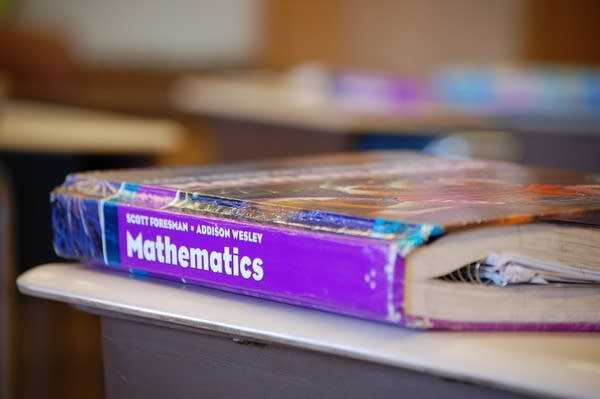New math scores show Minnesota students remain in top tier

Fourth- and eighth-graders in Minnesota continue to rank in the top-scoring tier of states, according to results of a national math test released Wednesday.
The National Assessment of Educational Progress (NAEP) test, which is also known as the "nation's report card," is widely considered the best assessment of how students across the nation perform in a number of subject areas.
The math test is given to a sample of fourth- and eighth-graders in each state every other year. In 2009, more than 300,000 students in more than 16,000 schools across the nation took the test.
In Minnesota, the average score was 249 (out of 500) for fourth-graders and 294 for eighth-graders. Both of those scores rank the state near the top, well ahead of the national average in each grade. Fourth-graders ranked third, behind Massachusetts (252) and New Hampshire (251). Eighth graders ranked second, behind only Massachusetts (299).
Create a More Connected Minnesota
MPR News is your trusted resource for the news you need. With your support, MPR News brings accessible, courageous journalism and authentic conversation to everyone - free of paywalls and barriers. Your gift makes a difference.
"We were really pleased," said Minnesota Education Commissioner Alice Seagren, of the results. "However I must put a big asterisk by that - we still have a large achievement gap."
Indeed, the NAEP scores echo past test results and studies that show Minnesota's gap in performance between white students and students of color.
Among Minnesota's fourth graders:
- White students averaged a score of 255;
- Black students averaged a score of 227;
- Hispanic students averaged a score of 232;
- Asian/Pacific Islander students averaged a score of 243; and
- American Indian students averaged a score of 233.
Among Minnesota's eighth graders:
- White students averaged a score of 300;
- Black students averaged a score of 264;
- Hispanic students averaged a score of 269;
- Asian/Pacific Islander students averaged a score of 283; and
- American Indian students averaged a score of 277.
There are different ways to interpret those numbers. On the one hand, Minnesota's black, Hispanic and American-Indian students all scored higher than the national average for each ethnic group.
In fact, Minnesota's American-Indian fourth-graders had the second-highest score in the nation, behind only Oklahoma.
On the other hand, Minnesota's actual achievement gap is larger than the national average. While students of color regularly performed above the national average, so too did white students - which kept the gap large. The national achievement gap between white and black fourth-graders, for example, is 26 points. Minnesota's gap is 28.
The results mirror past studies that show high achievement for Minnesota students, but also a notable achievement gap, including a July report that drew such conclusions using NAEP data from 2007.
The high scores also come nearly a year after Minnesota students fared well when compared to students from other countries, on a test called the TIMMS.
